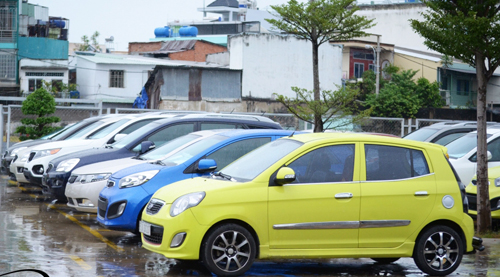Sunday, 14/12/2025 | 05:39 GMT+7
New cars (7 seats or fewer) must have energy label from January 1st, 2015 under Inter-ministerial Joint Circular No. 43/2014/TTLT BGTVT-BCT promulgated by the Ministry of Transport and Ministry of Industry and Trade on energy labeling for motor vehicles.

After deployment of the roadmap for mandatory energy labeling for the domestically used products and appliances group; the industrial equipment group (July 2013); office and business equipment (January 2014), on September 24, 2014 the Ministry of Transport and Ministry of Industry and Trade issued Inter-ministerial Joint Circular No. 43/2014/TTLT BGTVT-BCT with regulations on energy labeling for group of transport vehicles (cars of 7 seats or fewer), manufactured or assembled from loose parts, brand new or unused imported vehicles. This is the last group in the roadmap for energy labeling under Decision No 51/2011/QD-TTg approved by the Prime Minister.
According to the regulations, there are 2 types of energy consumption labels used for the announcement of the fuel consumption of automobiles; they are green and yellow color tags.
Green energy Labels represent data on fuel consumption of cars tested and certified by the governing agency (Department of Registry). The Yellow Labels represent data on fuel consumption announced by the manufacturers. The labeling is officially applied from January 1st, 2015 for newly assembled vehicles, and newly imported cars. For cases of registry with self announcement on fuel consumption and energy labeling (as defined in paragraph 1 of Article 5 of this Circular), the registering is applicable from January 1st, 2015 till December 31st, 2016.
As a rule, the energy label must be tagged inside the vehicle, on the side of the driver, in the fixed glass of the front or rear windshield, at the position for easy vision from outside the vehicle. Energy labels must be maintained on the vehicle until the vehicle is handed over to the consumers.
Energy labeling for products is meant to promote the economical and efficient use of energy. It is not only the need for improved competitiveness but also an evidence of corporation's practice in compliance with the provisions of laws.
Trong Tan








 Enhancing capacity to develop and implement energy efficiency policies at local level
Enhancing capacity to develop and implement energy efficiency policies at local level
 Bosch Vietnam Plant Benefits from Investment in Energy Efficiency
Bosch Vietnam Plant Benefits from Investment in Energy Efficiency
 Webinar 2: “Financial Support for Energy Efficiency Enterprises – Opportunities and Challenges”
Webinar 2: “Financial Support for Energy Efficiency Enterprises – Opportunities and Challenges”
 Vietnamese enterprises achieve green growth and cut costs through energy efficiency
Vietnamese enterprises achieve green growth and cut costs through energy efficiency
 Capacity Building for Program Implementing Entity
Capacity Building for Program Implementing Entity
 Promoting Energy Efficiency for Technical Staff of Brick and Ceramic Sector
Promoting Energy Efficiency for Technical Staff of Brick and Ceramic Sector
 Enhance Energy Efficiency Knowledge for Managers of Cement Industrial Enterprises
Enhance Energy Efficiency Knowledge for Managers of Cement Industrial Enterprises